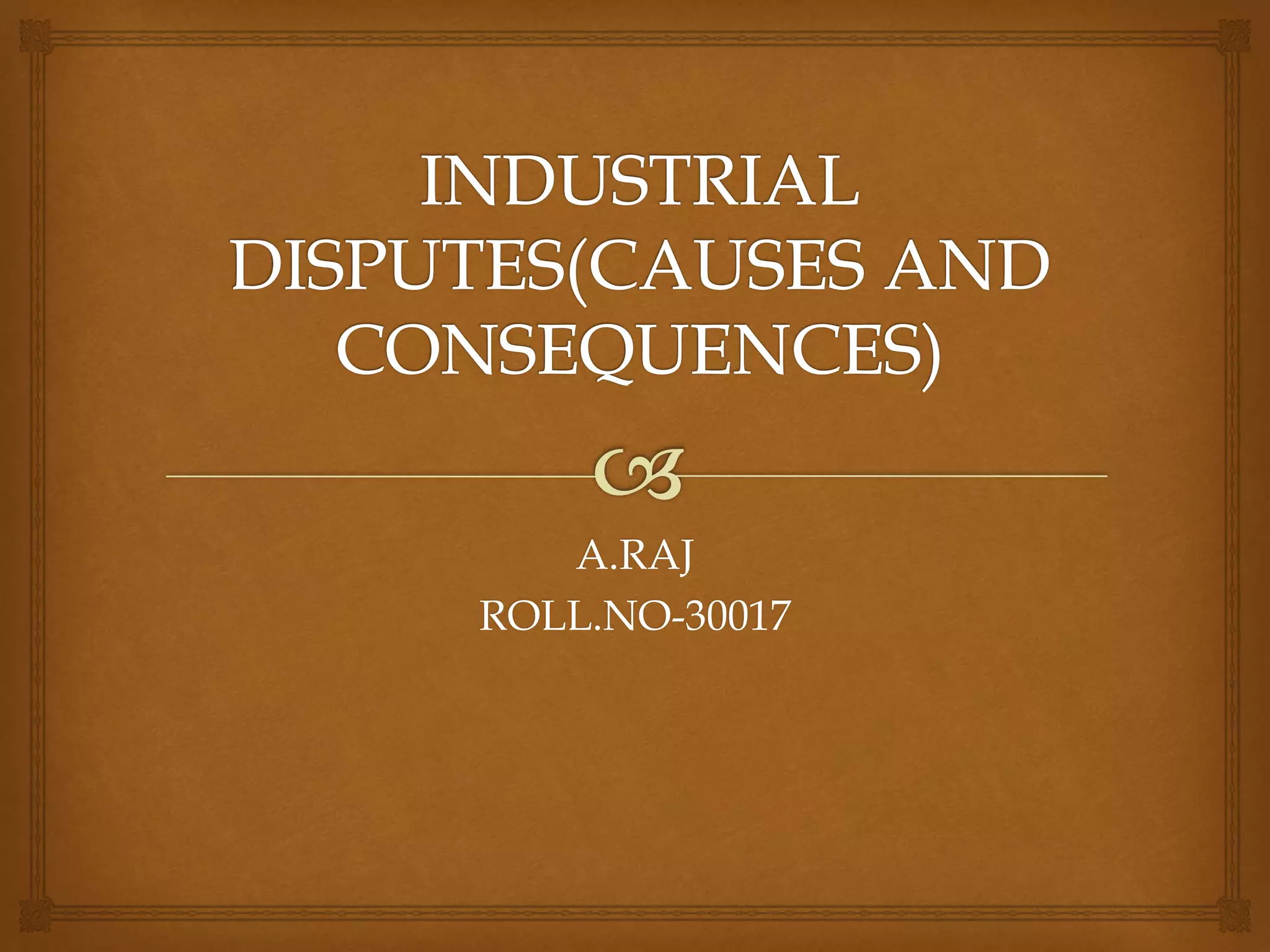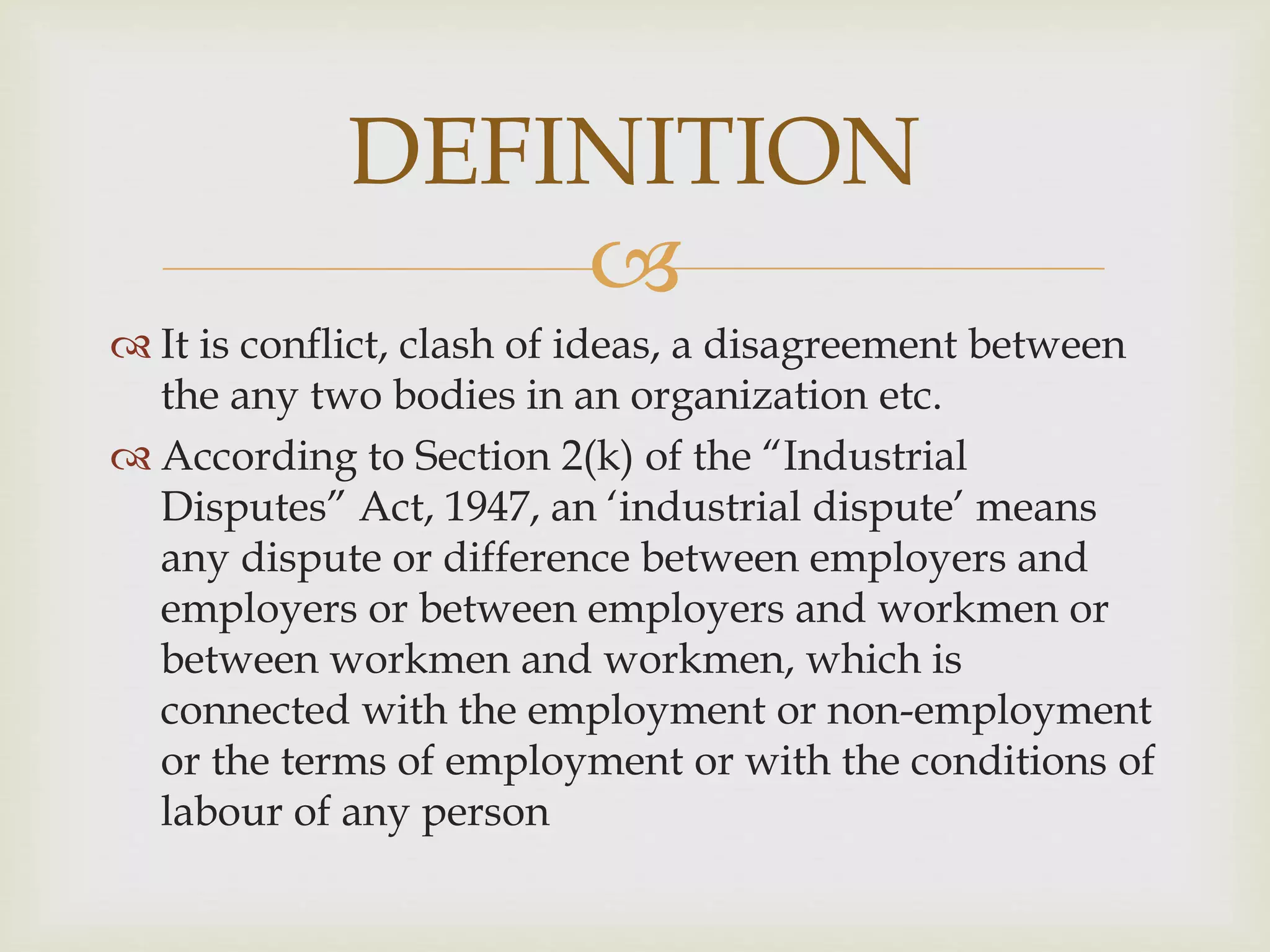This document discusses various types of industrial disputes and their causes and consequences. It defines an industrial dispute as any disagreement between employers and employees related to employment terms or conditions. Causes of disputes include industrial factors like wages and hours, management attitude issues, government machinery problems, and other issues like union rivalry. Consequences include strikes, lockouts, layoffs, and retrenchment, which are also defined in the document. Strikes involve a cessation of work, while lockouts involve employers closing businesses. Layoffs are temporary removals from payroll, while retrenchment is permanent termination for economic reasons.














